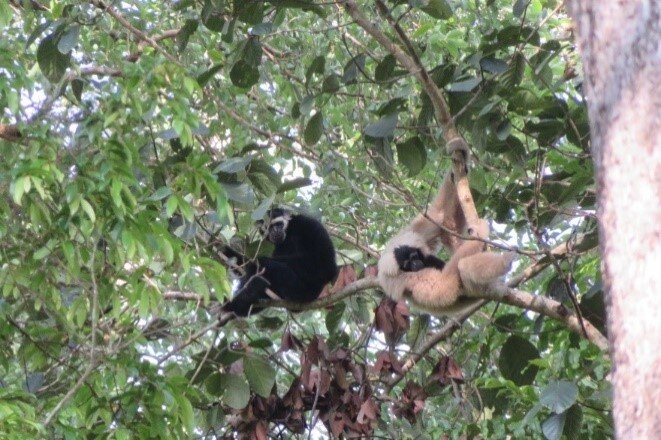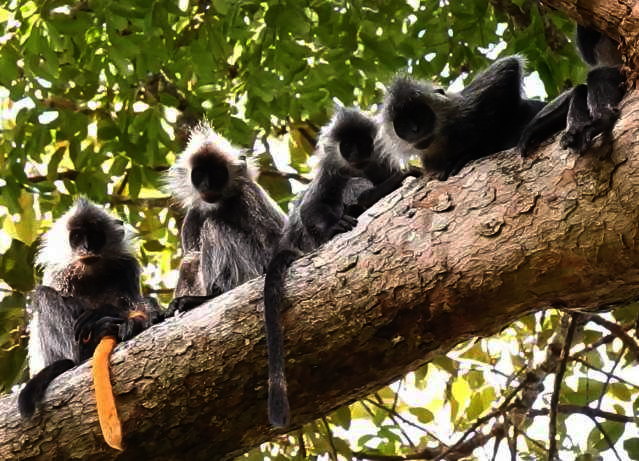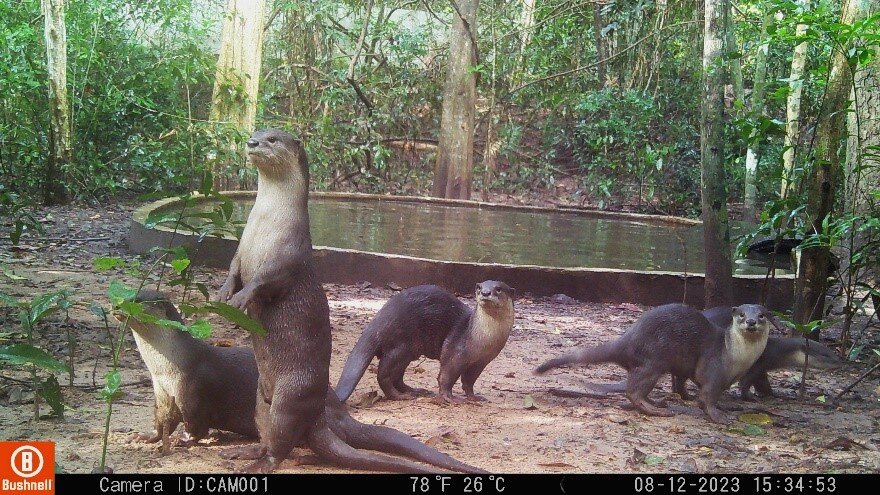By Elisabeth Gish | Grants Manager/Community Conservation Advisor
After many years, we have decided to stop fundraising on GlobalGiving for our project to bring wildlife back to Angkor Forest. Thank you so much for appreciating and supporting our efforts to reintroduce native species to this spectacular UNESCO World Heritage site. You can still check out the Angkor Wildlife Release Project section of Wildlife Alliance’s website for information on our work. While this will be our final GlobalGiving report because this particular project only gained limited traction on the site, our work at Angkor is far from finished.
Since we started raising funds for Angkor on GlobalGiving in 2015, with the support of donors like you:
These successful releases have been possible thanks to excellent cooperation between Wildlife Alliance and APSARA, the Cambodian Government authority that manages the Angkor Complex. Re-building Angkor’s wildlife populations, which were decimated by overhunting at the end of the last century, is a longstanding, resource-intensive commitment, and at times progress may seem slow. However, recent actions by two of the gibbons that were wild-born in Angkor and have now reached adulthood illustrate the advancements they are making.
You may recall from prior reports that the captive-born pairs released in Angkor have stayed close to their release sites and returned with their sub-adult offspring for every supplemental feeding. In contrast, wild-born Ping-peeung has travelled widely around Angkor since she reached adulthood. In March 2023, Ping-peeung began leaving the territory where she and her captive-born mate, Bakheng, were released. At first, she disappeared on her own, worrying our keepers, but in recent months her wanderings have enticed the more cautious Bakheng into more mobile behavior as well. In the past few months, the pair has explored the forest surrounding four different temples and Lake Santamea, which are hundreds of meters apart from each other and a few kilometers from their release site, and they have not returned for supplemental food on several occasions. Although our keepers hung a feed basket in the trees near one of these new temples where they seemed to have settled down in June, by July the pair had moved to another site in the forest behind the Elephant Terrace. The second-born offspring of the second released pair, Gondop, has also demonstrated considerable independence in recent months. Gondop left her family’s release site in mid-May after we translocated Ping-peeung’s brother there, he paired up with her older sister, and they began to harass her. Gondop was not located again until late June, where she was found living in the forest surrounding Preah Kan Temple. She had clearly been looking after herself just fine, and though the keepers hoisted a feed basket for Gondop in her new territory, she does not always come for the food. While these gibbons’ mobility is worrying from a management perspective, because they could either be exposed to people who try to humanize them or they could come into conflict with other released pairs if they enter their territory, it also demonstrates that they are not dependent on hand-outs and they display more wild behavior than the first generation of captive-born gibbon pairs.
Our experience with gibbons in Angkor demonstrates that animals rescued from the illegal wildlife trade or born in captivity and rehabilitated can indeed be used to create populations that are truly wild again, in areas from which they have been extirpated. Thank you so much for supporting our vision of restoring Angkor’s wildlife so the forest once again rings with life, and if you visit one day you may hear the whoops of gibbons, the wails of peafowl, or the chatter of otters.
By Nick Marx | Director, Wildlife Rescue, Care and Release
By Elisabeth Gish | Grants Manager/Community Conservation Advisor
Project reports on GlobalGiving are posted directly to globalgiving.org by Project Leaders as they are completed, generally every 3-4 months. To protect the integrity of these documents, GlobalGiving does not alter them; therefore you may find some language or formatting issues.
If you donate to this project or have donated to this project, you can recieve an email when this project posts a report. You can also subscribe for reports without donating.


